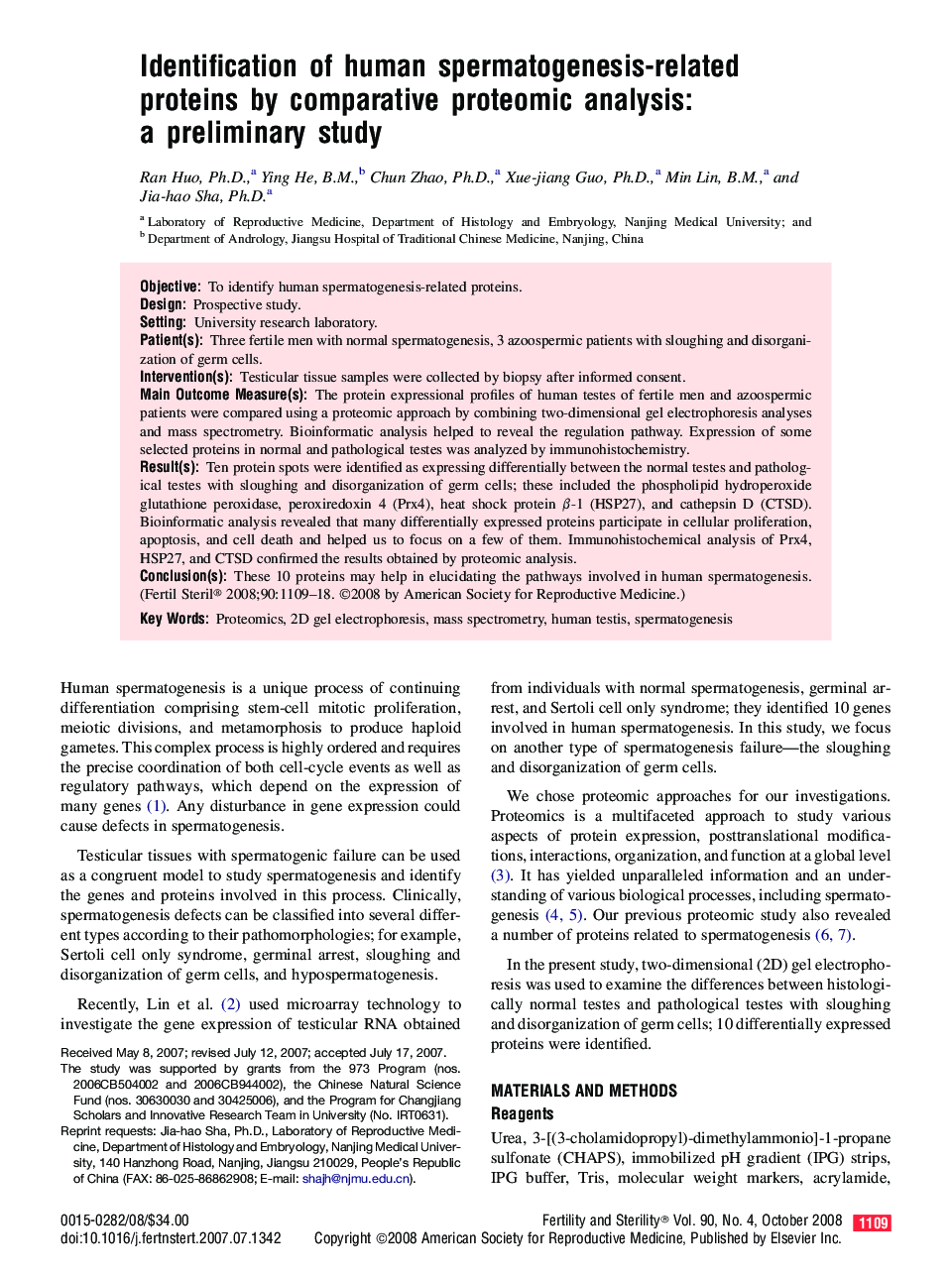| Article ID | Journal | Published Year | Pages | File Type |
|---|---|---|---|---|
| 3937351 | Fertility and Sterility | 2008 | 10 Pages |
ObjectiveTo identify human spermatogenesis-related proteins.DesignProspective study.SettingUniversity research laboratory.Patient(s)Three fertile men with normal spermatogenesis, 3 azoospermic patients with sloughing and disorganization of germ cells.Intervention(s)Testicular tissue samples were collected by biopsy after informed consent.Main Outcome Measure(s)The protein expressional profiles of human testes of fertile men and azoospermic patients were compared using a proteomic approach by combining two-dimensional gel electrophoresis analyses and mass spectrometry. Bioinformatic analysis helped to reveal the regulation pathway. Expression of some selected proteins in normal and pathological testes was analyzed by immunohistochemistry.Result(s)Ten protein spots were identified as expressing differentially between the normal testes and pathological testes with sloughing and disorganization of germ cells; these included the phospholipid hydroperoxide glutathione peroxidase, peroxiredoxin 4 (Prx4), heat shock protein β-1 (HSP27), and cathepsin D (CTSD). Bioinformatic analysis revealed that many differentially expressed proteins participate in cellular proliferation, apoptosis, and cell death and helped us to focus on a few of them. Immunohistochemical analysis of Prx4, HSP27, and CTSD confirmed the results obtained by proteomic analysis.Conclusion(s)These 10 proteins may help in elucidating the pathways involved in human spermatogenesis.
